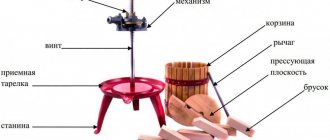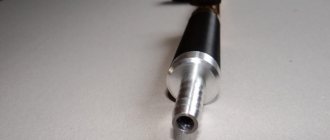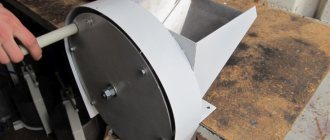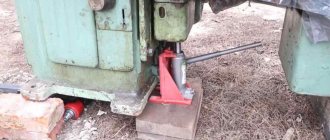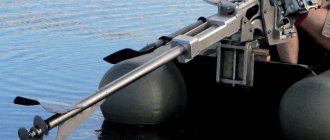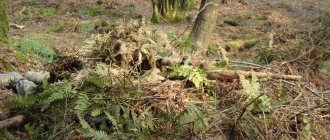This specific type of equipment is well known to all lovers of hunting, winter recreation and mountaineering. Buying a branded product will not be cheap, so most people prefer to make their own snowshoes. They are indispensable during winter hikes in the mountains and walking along snow-covered paths. The devices not only help you overcome the intended route, but also protect your feet from sinking into the snow and prevent falls.
The stores offer a wide range of different models, but you can make almost any of the presented options yourself. The differences between them are in the technologies and materials used. We will tell you how and from what it is easier to make such a thing in this article.
DIY snowshoes
What do you need to know before you start making this simple equipment? The first thing is to decide on what terrain you will be walking on. The second is to select materials and fastenings.
Before making snowshoes with your own hands, decide on their model.
Figure 1. Two types of snowshoes: solid base and mesh frame
In total, it is customary to distinguish two types (Figure 1):
- On a dense base without holes - needed to move on slippery ice in the mountains, they are made of plywood, plastic or a wooden block;
- With a full or partial base on a mesh frame - for walking through a snowy forest, the main structure is made of plastic, aluminum, wood or bone, weaving - synthetic thread, rope.
An important point is the fastening of the product; it should be selected to match the shoes on which it will be worn - boots with a welt or any other. Fasteners can be made of rope, woven rods or leather straps, which will be more reliable.
Let's take a closer look at why use snowshoe equipment (Figure 2):
- They are comfortable to use - lighter and smaller in size than wide ski tracks;
- They provide greater speed of movement, unlike hunting skis, although they have an almost identical design in terms of their base and method of fixation;
- Cover a larger area of the surface under your feet, evenly distributing and reducing pressure on it;
- They allow you to easily move on the crust without falling under it, increase stability due to the larger area of contact of the foot with the ground;
- Indispensable when crossing frozen ponds and mountain paths, for which special elements are provided in the design - hooks and crampons.
Figure 2. Using snowshoes
Terms of use
In order to learn how to snowshoe, three hours of practice will be enough. At the same time, when moving, it is necessary to take into account general rules that will help speed up walking and reduce the load on the legs.
Rules for using homemade snowshoes:
- In order to put on devices for moving on snow or ice, you need to place your foot on the base and align the location of the heel with the fulcrum. After this, the fastenings are alternately tied or fastened. At the very end, the reliability of the fixation and comfort for the person’s feet are checked.
- While walking, you need to place your foot on your heel, and then smoothly move the center of gravity to the entire foot.
- The speed of movement should be approximately the same as without the use of useful devices.
- You should not raise your leg high with each step. Otherwise, the muscles will quickly get tired, which will lead to cramps.
- When moving on loose snow, you should lift only your toes above the surface, and then slide on your heel.
- When walking, it is better to use auxiliary devices - sticks. You can also make them yourself or break off branches from any tree. In this case, the length of the poles should be such that a person can comfortably move with a straight back.
- When moving uphill, you need to hit the snow surface with your toe forcefully. This action will make it possible to use snowshoes as a lever for lifting.
- When going down the slope, you need to walk narrowly and slowly. If you were unable to maintain your balance, then it is better not to run down the mountain, but to sit down and slide down.
- When moving along the slope, it is necessary to drive the side surface of the equipment into the snow. For greater stability, it is recommended to use sticks.
- Several hikers or snowshoe hunters should move in formation. This will help reduce the stress on the last team member. However, it will be necessary to change the leader periodically, since he will get tired much more than the others.
Snowshoes are an important piece of equipment to take with you on a long winter hike. Thanks to them, you can avoid various difficulties and easily overcome deep snowdrifts.
Selection of materials for snowshoes
When starting production, consider the terrain for movement and weather conditions. Study the geographical features of the area where you will go and only then model a certain shape of the product and choose the right material.
Answering a common question - how to make snowshoes with your own hands, we can immediately say that there are two proven recipes.
The main types of homemade snowshoes (Figure 3):
- Frame options - made of aluminum or plastic pipes, pieces of tarpaulin and leather;
- Quickly, right on the spot - woven from improvised means, cords and branches.
Separately, there are models for icy areas, although they have no fundamental differences, except for additional equipment - crampons, special claws that prevent slipping.
There are also more complex schemes. To make two-wheeled snowshoes with your own hands, you will have to take care of the availability of mounts for the wheels and the wheels themselves.
Figure 3. Frame and “quick-make” snowshoes
Snowshoe wheels:
- They will provide maneuverability and increase the speed of movement on rolled snow;
- High-quality plastic wheels of small sizes, from office furniture or the same skateboard, are suitable for them;
- They are installed in the middle of the product, symmetrically on both sides of the frame.
You can even make self-balancing snowshoes with your own hands, the whole trick of which is to correctly distribute the load and body weight relative to the frame.
Self-balancing snowshoes:
- As a rule, they are slightly larger than usual in size, but are made of lighter material, so they weigh less;
- They require calculations of how much area the ski track should be so that you don’t fall under the snow and move confidently on any surface;
- If they are designed for ice and ensuring balance, then you should think carefully about where and how many metal claws will be located so that you can easily maintain your balance on an icy lake, similar to the same skates.
When it comes to selecting materials, most hunters and fishermen give their preference to plywood, as it is affordable and allows you to cover short distances without much effort (Figure 4).
Figure 4. Example of plywood snowshoes
Here is a simple method on how to make your own snowshoes from plywood:
- For the deck you will need a sheet of plywood No. 7-10, a jigsaw, a drill and screws, a drill with drills and two small boards measuring 20x50;
- To secure the finished ski on your leg, you can use leather straps or bindings for regular skis;
- Next, two elongated ovals or rectangles with rounded edges are marked on the sheet, and the marked shape is cut out with a jigsaw, after which the place for the foot is marked on it;
- Two planks are attached along the foot on the underside of the deck to strengthen the structure, which will prevent the plywood from breaking when stepping on an unevenness or hole;
- Important - the length of the board to be fixed must be identical to the length of the frame itself;
- After both elements are fastened to each other, a line is drawn for the center of the foot and holes for the screws are marked on it with dots;
- Please note - plywood holes should be slightly narrower than the diameter of the screws, and block holes, on the contrary, wider;
- Small holes are filled with glue, after which they are twisted using fasteners with a frame;
- Stepping away from the markings of the foot, other holes are drilled into which laces or ropes are threaded, when using wide straps - they need to be enlarged with a jigsaw, they will ensure the fixation of your foot with the equipment.
Popular models
Manufacturers of clothing, footwear and hunting accessories offer customers many interesting models of snowshoes. They are intended for winter catching of animals in places where it is difficult to move in ordinary boots or shoes.
Yukon Charlies Pro Guide V 1036
Snowshoes show good maneuverability in deep snow. The base of this model is made of anodized aluminum, which is highly durable. Thanks to this, snowshoes can withstand weights of up to 140 kg. They themselves weigh 2.31 kg. This is one of their many advantages.
The model has a V-shape. Its fastening is made according to the “ratchet” type. Due to this, the product allows you to develop a fairly high speed when walking.
Cat fixtures are made of stainless steel. This ensures good adhesion of the product to various surfaces. The back of the snowshoes is laced. Thanks to this, the stability of the body increases while moving along snowy paths.
The upper part of the model is made of high-strength polyethylene. It has low density. All other parts that complement the snowshoes are made of stainless steel or copper.
Pro Guide V 825W
Snowshoes of this model are of high quality. Their characteristics are similar to the Yukon Charlies Pro Guide V 1036, only they have more compact dimensions and less weight. Their weight reaches only 1.95 kg.
During the manufacturing process, the manufacturer uses anodized aluminum. The design and shape of the model is similar to the Yukon Charlies Pro Guide V 1036. This product can withstand a load of no more than 90 kg. Therefore, they should be taken with you on hunts with a small number of additional devices.
Trail 1036
Snowshoes can withstand a hunter who weighs more than 100 kilograms. Lightweight snowshoes are made of aluminum.
The deck of the product is made from this material. The model is distinguished by a polyethylene coating, which is characterized by high density. The snowshoes weigh 2.268 kg. They can withstand weight up to 140 kg. Therefore, the owner of such snowshoes should not be afraid to take weighty devices for hunting with him when hunting.
The model features a practical ratchet fastening system. With its help, you can quickly and easily attach snowshoes to shoes. Aluminum crampons give the product excellent adhesion to sliding surfaces.
The upper part of the product is made of plastic, which is manufactured using modern technology and has good strength characteristics.
Do-it-yourself snowshoes from plastic pipes - how to make?
The simplest and most cost-effective option to make a product is to use plastic and a nylon cord with elastic bands (Figure 5). In order to assemble snowshoe equipment this way, you will need:
plastic polypropylene pipes with a diameter of 20-30mm, a length of 1.5m - 2 pieces;
nylon cord or synthetic rope with a cross-section of 4-6mm - approximately 2 skeins;
technical elastic band, for fixing the leg - 2 pieces, you can take 4 with a reserve.
It’s easy to see that all these purchases will easily fall within the limits of up to 1000 rubles. Now let's move on to the master class.
Figure 5. Example of snowshoes made of plastic pipes
How to make snowshoes at home from plastic pipes:
- Cut 20cm from each tube;
- Take long pieces and shape them into a semicircle by heating the middle part of each on a gas stove;
- To get the correct oval, use rounded objects at hand, for example a metal teapot;
- Cool the bent elements in cold running water;
- Bend the toes of the resulting blanks by 120-130 degrees; for greater accuracy, use a protractor;
- Bend the ends of the tubes so that they are tightly connected to each other and you have a completed structure;
- Take a rope or cord and start winding it around the product; for better fixation, sand the surface of the pipe with sandpaper;
- Secure the pieces of plastic that were initially cut across in the middle of the resulting ski track using a cord;
- Install the fastening rubber bands onto the secured sections using mounting fasteners.
Manufacturing stages
The material needs to be given an oval shape. The width and height are calculated individually for the foot of the person who will wear this device. It is necessary to prepare bars specifically for the crossbars, water-repellent impregnation to treat the wood to protect it from swelling and cracking.
https://youtube.com/watch?v=5eQubZVAHzg%3F
We give the beam the desired shape, but do not fasten the ends separately from the frames. Holes are made in the bars in advance to fit the size of the twine or other selected material that you will be stretching. There should be approximately 20-22 similar holes. The next step is to form a mesh from twine. It is made by pulling elements through ready-made holes crosswise. The finished mesh should be covered with any dense fabric. For fastening it is necessary to use belts, the width of which is selected so that the foot can easily fit in the shoe. The straps are firmly fixed in the middle of the base.
It will be more difficult to make a plastic structure, so you will need more detailed instructions:
- To make snowshoes from more modern high-quality materials, you can, for example, use polypropylene pipes as a basis. Their diameter should be 20 mm. This design ensures the strength and reliability of the product. From these pipes you need to prepare four blanks 65 cm long, eight blanks 23 cm long. Additionally, you will need four fragments of a metal-plastic pipe (50 cm long). The edges of the pipes will need to be slightly rounded.
- The next step is to heat the ends of 6 tubes with a special gas burner and insert them into adapters (also called tees). If such a device is not at hand, heat it over a gas stove. The output should be tubes 23 cm long and adapters at the ends.
- In the same way, the ends of metal-plastic tubes (4 of them) and the remaining polypropylene tubes are heated. Now you can start assembling the frame. Each includes three components. One end of the frame is fixed with so-called barrels. Metal-plastic tubes are bent and fastened to the resulting frame with self-tapping screws to form the nose of a snowshoe (part of a hoop).
- Next, the holes necessary to stretch the mesh onto the frame frame are made. The cord is pulled in the form of diamonds.
- We prepare a base for fastening from plywood (size 30x15 cm), then install the fastening itself.
- The final stage is to securely fix the frame base to the plastic frame. The resulting homemade snowshoes can support the weight of a person with dimensions of about 75 kg.
We use nylon thread for weaving
An important point is to braid the frame correctly so that with minimal braid costs you get the largest support area (Figure 6). Let's look at how to make snowshoes yourself, focusing on tying with nylon thread.
Figure 6. Example of “knitted” snowshoes
Snowshoes with nylon thread dressing:
- The weave pattern is somewhat similar to the fashionable direction of macrame needlework; it not only looks aesthetically pleasing, but also provides high reliability and density;
- All jumpers and dressings at support points should be as rigid as possible, since they bear all your weight and the main load;
- The braid or thread should be pulled tightly and evenly around the entire perimeter of the frame, avoiding sagging;
- To make the nylon stretch better, it should be slightly moistened with water;
- First, transverse cords are stretched on the frame, serving as the basis for further design, and the weaving itself begins from the toe;
- You can make your task easier by melting the ends of the nylon ribbon with a match or lighter - this way they will not break during work;
- The lace should be woven and laid in such a way that all the angles of its intersections are as straight as possible;
- From the second row two more braids are added to it, and from the third two more and so on until the first crossbar on the frame;
- On the other side, the ropes are woven in a similar way, and at the meeting point the ribbons are connected with classic knots;
- Also, don’t forget about the fastenings for your feet - they need to be woven into your macrame, choosing elastic bands or pieces of leather that will cover the booted foot as firmly as possible;
- Upon completion of the work, all ends of the weaving are secured with loops and small nails, and the finished product, together with the mesh, is covered with a layer of varnish.
Snowmobile sled. / Siberian hunter
As they say - prepare a sleigh in summer, a cart in winter!)
I rode the first winter, the snow was broken in, and for the next season it was decided to get a sled. I looked in stores and on websites, but I wanted something that was reliable and functional! Having never found anything ready-made, I decided to make it myself. I looked at the forums, various photographs, read and listened to the advice of experienced people, and thoughts began to boil in my head.
I started looking for materials in the spring, the main task was to find a HDPE pipe, there was iron in stock, there was plenty to choose from for cutting and “sewing.” When communicating during the spring hunt, the conversation turned to snowmobiles and sleighs. and I said my thoughts out loud.
As they say, the world is not without good people, so after a few weeks, 7 meters of 230 pipes with a wall thickness of 25 mm lay in the yard, happiness knew no bounds))) The beginning is here! And now summer has come, it’s time to prepare the sleigh!
The piece was cut lengthwise into runners with a jigsaw, into three equal parts, 3 meters long
I cut cross members from short pipes, the width of the snowmobile skis. First I cut out a template from cardboard
and then it was not difficult to mark and cut out the crossbars, it turned out clearly and equally
The following picture was painted
Time passed and summer flew away. the sleigh needed to be jew's harp, and there was a catastrophic lack of time. either a business trip or porcini mushrooms. then the milk mushrooms, the opening for ducks is on the way, the berries are growing warm... and it’s already September. There’s also everyday life, but everyone knows how it happens, it seems like it’s summer, but it’s already autumn, and winter is right here! It’s not for nothing that the proverb says, prepare your sleigh in the summer! I’m a little distracted, but in fact it happened and I’m writing as if in spirit!
The blanks were prepared, the iron was cut, bolts were purchased, and of course the tools. electrodes, grinder wheels, etc. Krail sometimes during the day, sometimes at night. I even thought about taking part in a homemade competition, but I couldn’t meet the deadlines))), this didn’t upset me at all and I moved forward to the best of my ability, Dad supported me, sometimes with advice, sometimes with real help, it’s more fun together!
Much was prepared, the base was assembled, the ends of the skis were bent. a little about bends - I bent them with a hairdryer, this is the most sensible thing, a blowtorch is not suitable in this case, I heated them, bent them, and fixed them with bolts.
Advice from professionals
Experienced snowmobile owners say that there is no universal sled. In the snowy northern regions, this transport is used to perform various tasks. If you need to frequently transport cargo, want to go on vacation, give rides to guests, it’s best to get several sleds.
In the snowy northern regions, a snowmobile with a sleigh is a popular means of transportation.
The material for the sled is chosen taking into account the terrain on which it is intended to be ridden. Plastic is good for deep snow. To ride over bumps, you need a sled with wide metal skis. Passenger models are equipped with shock absorbers.
When transporting cargo, it is important to stow it correctly to achieve load balance. To protect luggage from getting wet, it is optimal for such transportation to have sleigh boxes.
Choosing between homemade and factory options
When it comes to this topic, the root of it lies in a financial problem or the inability to find a particular ski model. It is at this moment that a person thinks about whether he can make the necessary part with his own hands. Homemade options are also offered by craftsmen who easily make not only skis, but also snowmobiles themselves.
Of course, factory parts? this is the standard of quality. They are created for a specific model by experienced specialists, and snowmobiles on these skis are first tested in various conditions. If the car is an expensive sports car, then it is better to purchase components for it from the factory. How to proceed ? Buy a new model in a store or make everything yourself? The choice is up to the owner of the winter vehicle.
There are several manufacturing options: you can use tin, wood, plywood, old hunting skis and snowmobile extensions. [ads-pc-2]
